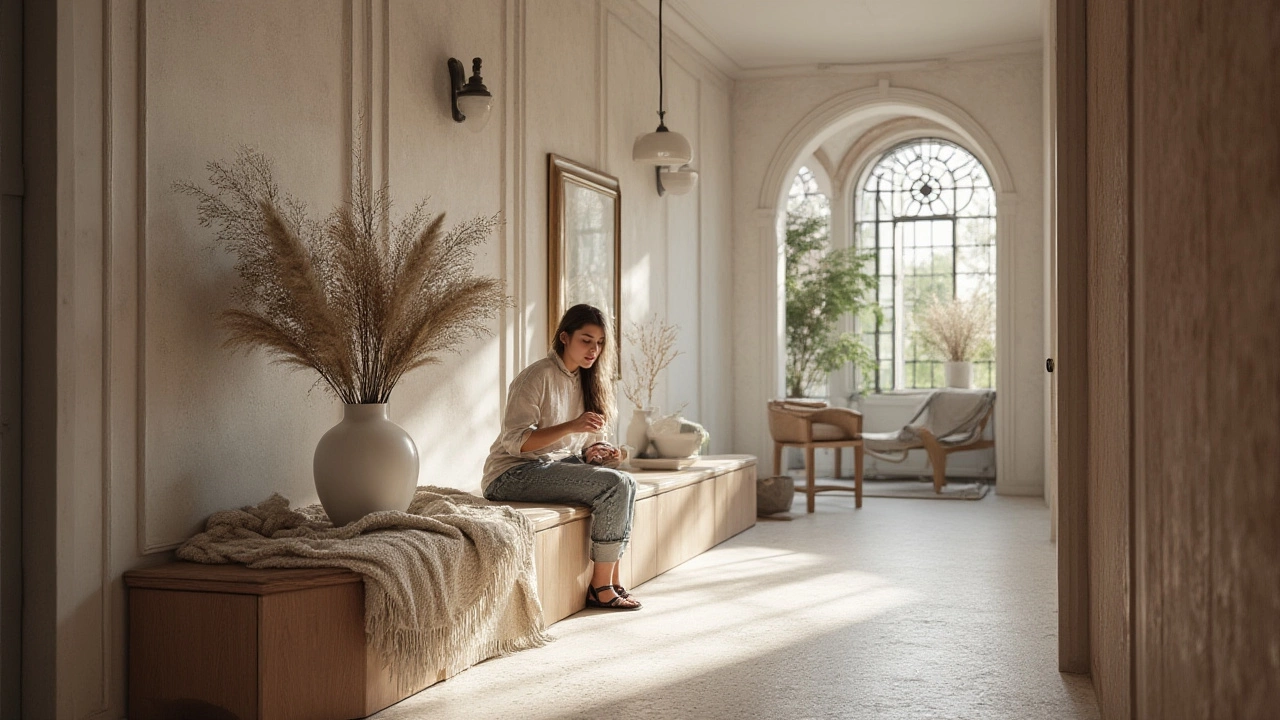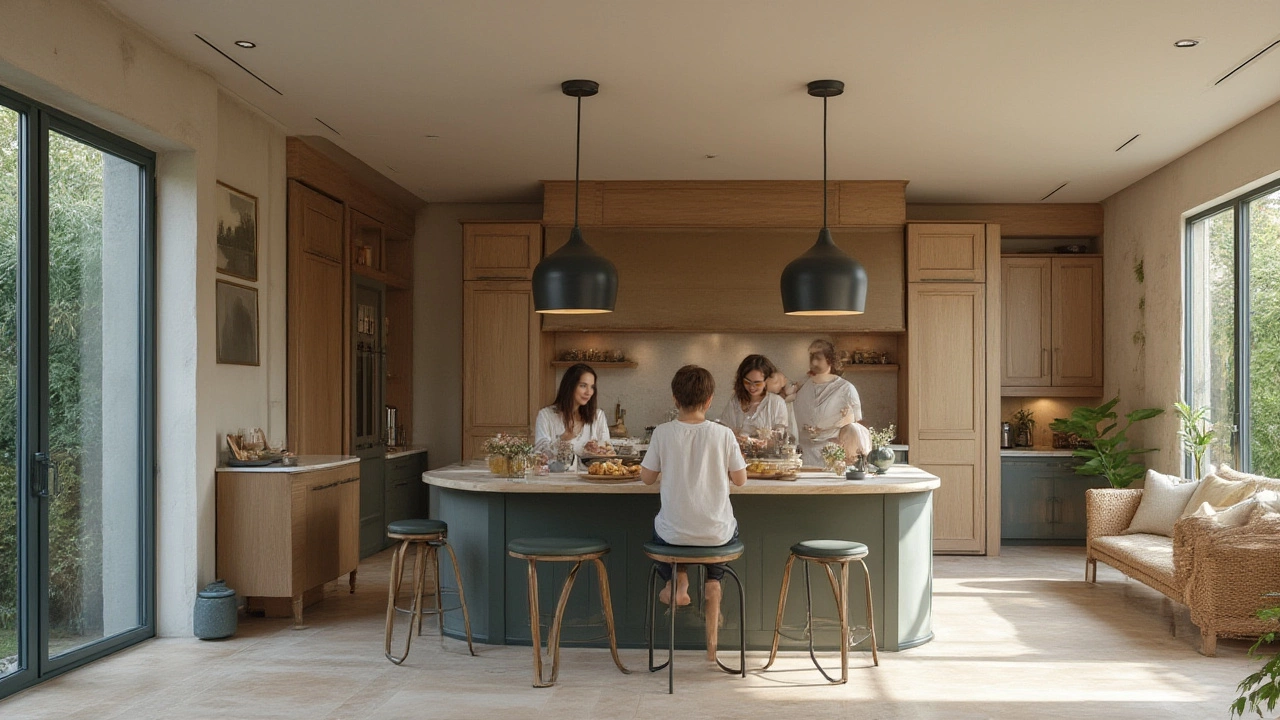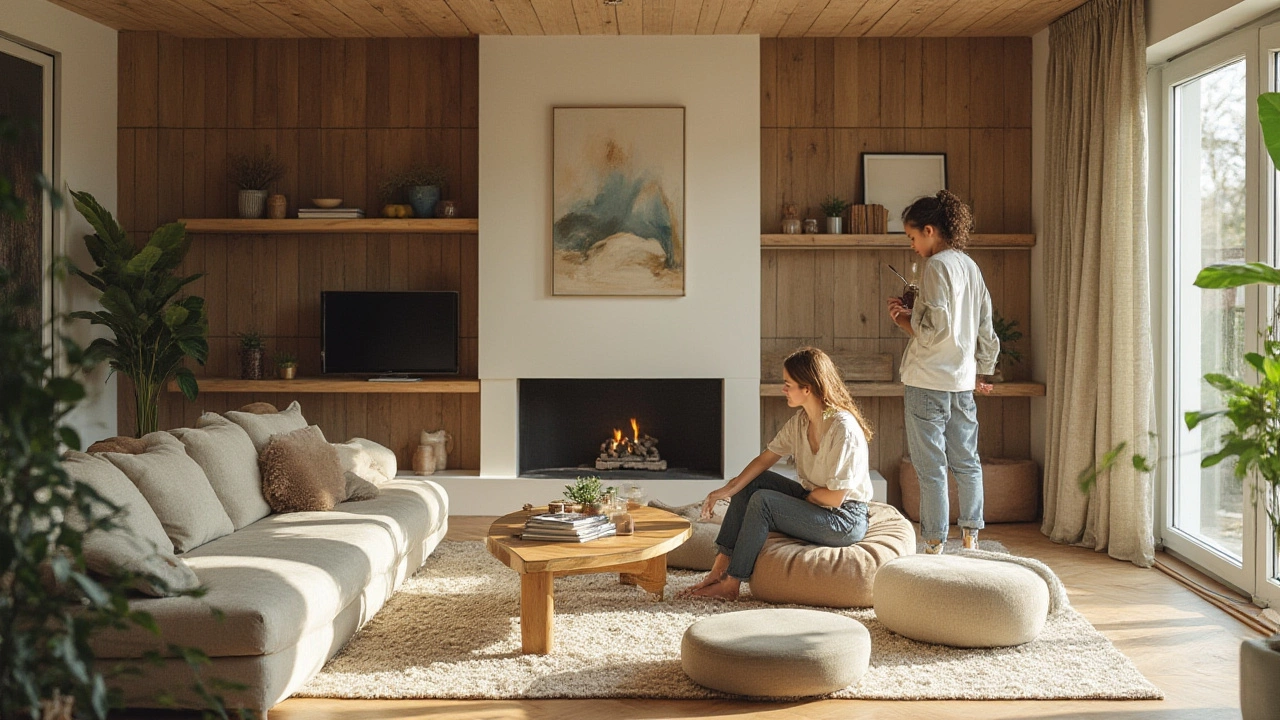If you’ve scrolled through home inspiration accounts or flicked through a glossy design mag lately, you might’ve noticed interiors looking more curated and cozy than ever. People aren’t just chasing another fleeting trend—they’re blending personal comfort, sustainable choices, and visuals that actually feel like home. Step into just about any well-designed house and you'll sense it: today’s interior vibe is all about “Warm Minimalism.” That may sound like a weird mashup—minimal but warm?—but it’s everywhere, and there’s loads to unpack.
The Rise of Warm Minimalism: Why 2025 Looks This Way
Back in the pre-pandemic years, “Scandi” white-on-white ruled Instagram. Sharp lines, everything pale and impersonal—if it didn’t spark joy, it got tossed. But then folks started craving more comfort at home. Sitting on a minimalist sofa made for photos, not relaxing? Yeah, that stopped feeling right. So by 2023, you saw designers getting personal: mixing treasures from thrift shops, curving up sofas, layering rugs and blankets, splashing in colors that were soft but not sterile. Sustainability? Huge. Reclaimed wood, organic cotton, upcycled side tables, and brands talking openly about their footprint. Interior design style isn’t just about looks anymore—it’s about what feels good.
Let’s talk authenticity. Data from Houzz’s 2024 survey showed nearly 58% of American homeowners planned to invest in eco-friendly furniture, up 18% since 2021. It’s not just about being green—it’s about things that last. Warm Minimalism meets that need: you ditch clutter, but what stays matters more. Those old family photos? They still get pride of place, not boxed away because they don’t “match.” The palette leans earthy—soft beige, muted olive, even deep browns—but always with a little pop of burnt orange, rust, or dusty blue. Texture is key: think chunky wool throws, hand-thrown pottery, linen curtains you actually want to touch.
The charm of Warm Minimalism is also in mixing—not matching. You might see a streamlined modular sectional, but paired with a vintage rug, or a clean-lined dining table with woven leather chairs. It’s okay to have empty space, but that emptiness has to feel good, not cold. So, natural materials reign: unfinished woods, stone countertops, and soft leather. Plants are everywhere, but not the fake ones—real monsters, potted olives, even little herb gardens on windowsills. Stats from the American Society of Interior Designers show plant purchases for interiors jumped 27% since 2022. If you see a splash of art, it’s likely original or small-batch, rather than mass-produced prints from a big-box store.
Lighting is another star player. In 2025, harsh overheads are out. Now, spaces glow with layered lighting—think paper lanterns, low-slung pendants, and adjustable wall sconces. Smart bulbs? Sure, but not for the sake of it. The goal: flexibility. Want to read at dusk? Change that vibe with a tap. Candles and lanterns are back, too, but in ways that look intentional rather than cluttered.
This shift is no accident—it reflects a bigger cultural move back to home as sanctuary. After the world went on pause, people wanted their space to feel safe, soothing, and personal. The "Instagram showroom" look is being replaced by a live-in luxury, wrapped in natural materials and personal touches. There’s less pressure to perform for guests or the camera. It’s more about a mood: calm, but not clinical; organized, but not empty; curated, but still human.

Tips and Tricks for Nailing Warm Minimalism at Home
Want to ride the 2025 interior wave without making your living room look like an Airbnb? It’s not about starting from scratch or dropping money on matching sets. Instead, use what you have in smarter ways—and think comfort, authenticity, and sustainability first. Here’s how:
- Edit with care—don’t just declutter, curate: Instead of dumping everything extra, pick a few things that matter. Maybe it’s a coffee table book, grandma’s old vase, or that handwoven basket you scored at the market. Give each piece space to shine.
- Mix materials and textures: Pair a smooth, modern sofa with a chunky wool blanket and a vintage reclaimed-wood side table. Layering makes minimalism feel cozy instead of sterile.
- Focus on earth-friendly finds: Reclaimed woods, recycled glass, and organic textiles aren’t just eco-friendly—they also bring warmth and texture to a space. If you’re hunting for new furniture, check certifications like FSC for wood, or OEKO-TEX for fabrics.
- Go bold with greenery: Don’t just add a plant to a shelf—create a living vignette with several. Trailing pothos, a potted fig tree, succulents on side tables—they all add organic shape and color. Big statement plants work especially well in airy rooms.
- Layer your lighting: Ditch that single overhead. Use table lamps, wall sconces, and floor lamps for a more inviting vibe. Warm, dimmable bulbs (about 2700 Kelvin for soft yellow light) make all the difference.
- Embrace empty space—just not too much: Warm Minimalism means there’s still breathing room. Echoes of Japanese “ma” (the space between things) are everywhere. But instead of emptiness, imagine negative space in a painting—intentional, not accidental.
- Add personal touches without clutter: Think one or two meaningful art pieces, a family photo, or a handmade ceramic bowl on the table. These details ground the space and make it unmistakably yours.
- Don’t fear color—just soften it: Earthy greens, peached terra-cotta, and muted blue tones work well, especially on accent cushions, throws, or a painted wall.
Here’s a cheat sheet of core elements defining Warm Minimalism right now:
| Element | Description | Why It Matters |
|---|---|---|
| Natural Materials | Woods, stone, clay, wool, linen | Brings warmth, durability, and authenticity to a space |
| Layered Lighting | Pendants, table lamps, wall lights, candlelight | Flexible comfort for every mood and activity |
| Edit, Don’t Clutter | Keep what matters; let go of the rest | Spaces feel calm but personal, not empty |
| Greenery | Live plants, from tiny succulents to statement trees | Brings life without fuss or excess |
| Accent Color | Earthy/soft hues, minimal bold colors | Keeps the palette interesting but restful |
If you’re out shopping, look for designers who talk about how things are made, and artisans who use traditional methods. Swap out plastic knickknacks for something real, whether it’s a handmade mug or a woven tray. Play around with soft furnishings you already have—move that chunkier blanket into the living room, stash those clashing prints for a while. You’ll soon see it’s less about buying new and more about living intentionally.

How Warm Minimalism Fits In With Broader Global Trends
It’s easy to think Warm Minimalism is just a Pinterest fad, but this style lines up with wider shifts in how we live, shop, and even think. For starters, interest in “legacy” furniture—stuff you hope to pass on one day—has overtaken fast, disposable buys. The 2024 American Home Furnishings Survey showed a 34% drop in single-use furniture sales since 2019. That’s a big deal.
Tech plays a subtle role too. Our spaces need to function for everything: work, rest, hobbies, even the odd yoga session by the window. Warm Minimalism adapts to that. Wireless charging pads disappear into wooden desks. Soft-close storage sneaks away clutter. Portable lamps charge up once a week and move wherever you do. And you’re not chained to “smart home” everything—people want tactile controls, analog touches, and sometimes just the pleasure of lighting a real candle instead of yelling at Alexa.
This isn’t just a U.S. movement. Warm Minimalism shares DNA with Japanese wabi-sabi—finding beauty in the imperfect—and the Danish “hygge” ethos (coziness, simplicity, content). In London or Sydney, designers are working with more daylight, softer corners, and handcrafted statement pieces. Even in hot markets like South Korea and Brazil, you’ll spot this look: pared-back spaces, but with inviting color, and always with something alive—usually a cluster of green plants or pottery arranged just so.
Want proof the trend’s got real staying power? Just look at where big retailers are spending their marketing dollars. As of spring 2025, “Artisan made,” “Natural,” and “Everyday Comfort” have replaced buzzwords like “mid-century modern” or “farmhouse.” Pinterest started tracking #CozyMinimalist as the fastest-rising home decor tag of late 2024. And if you search for new homes on real estate sites, staged interiors almost always lean into this style—airy but not blank, neutral but warm, with carefully chosen texture instead of clutter.
If you’re renting, or just want a refresh without gutting your savings, focus on small changes. Swap out a rug, hang a linen curtain, or group a few thrifted ceramics for impact. Rearranging furniture to open up new pathways and creating little "moments"—like a reading nook with a soft chair and lamp—does more for authenticity than any single big-splash purchase.
Warm Minimalism reflects a desire to slow down. It asks us to live with less, but better; to spark comfort and pride with every piece in our space. The end goal isn’t a picture-perfect room, but a home that feels like it’s truly yours. As the world spins faster than ever, maybe that's the real luxury in 2025.
